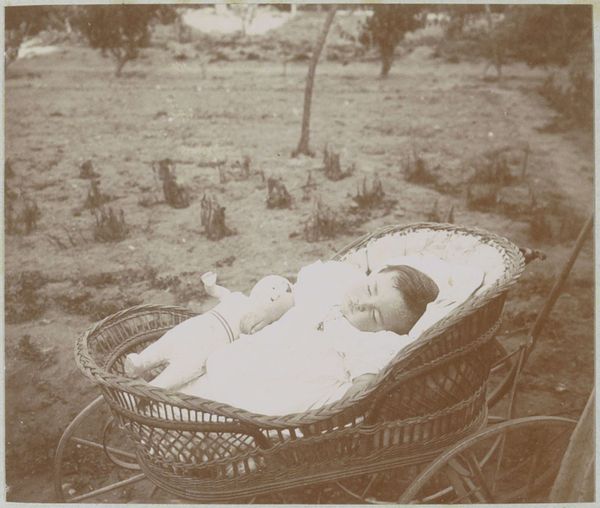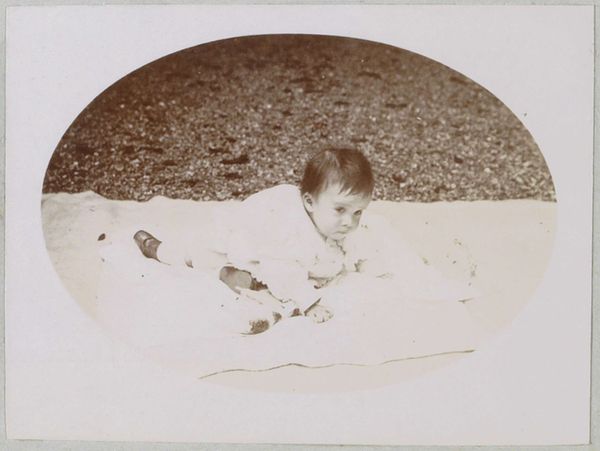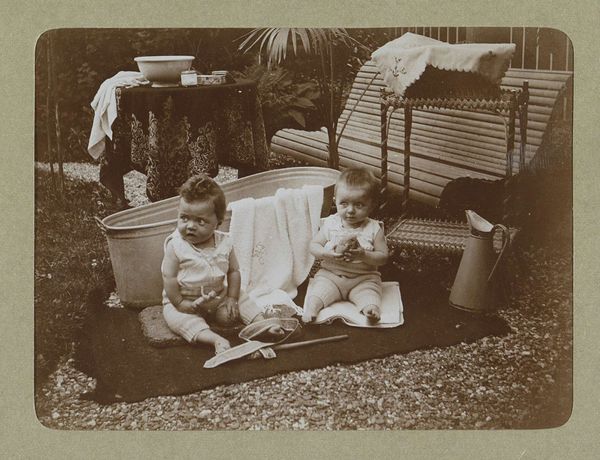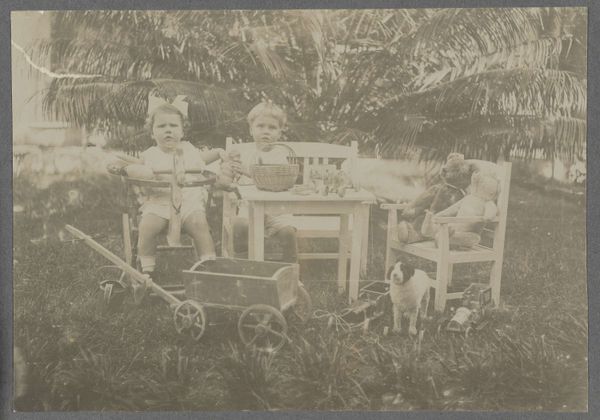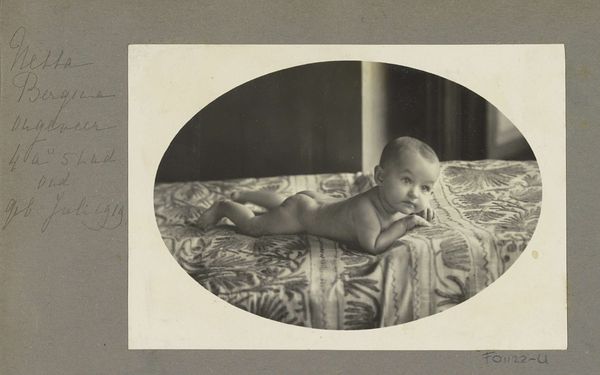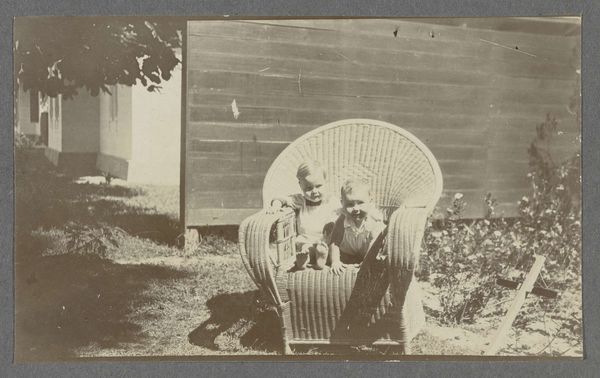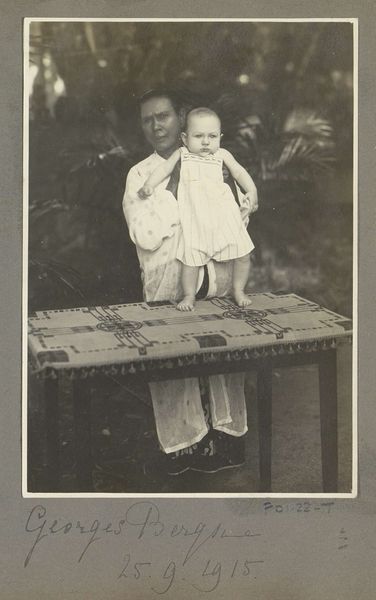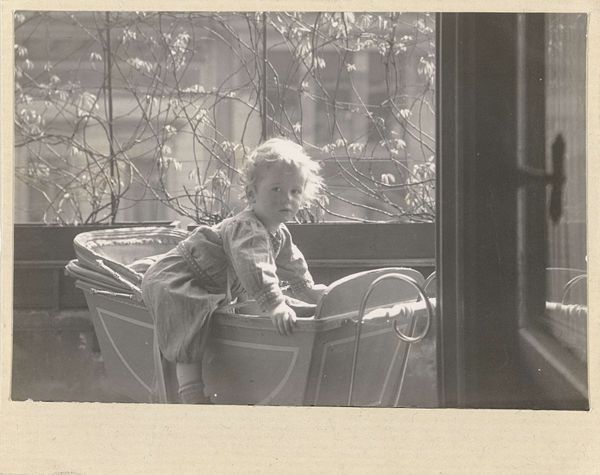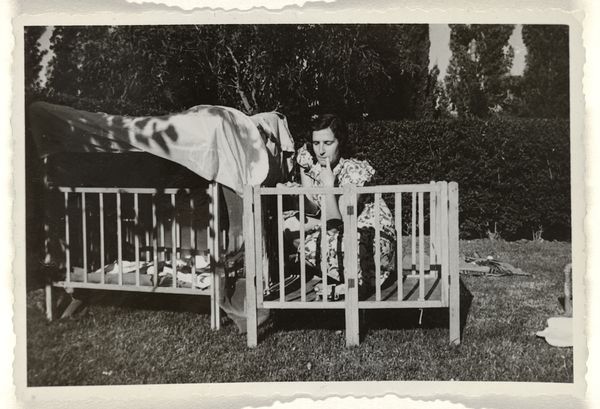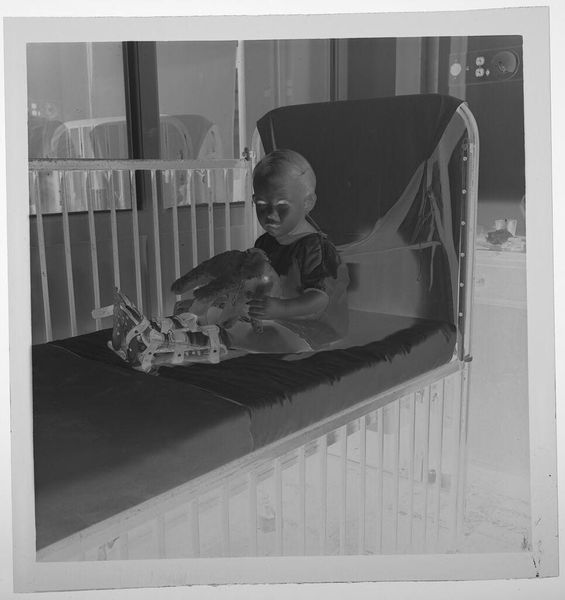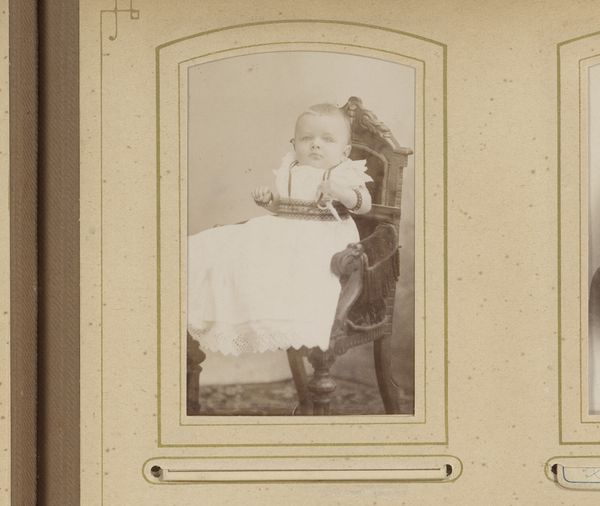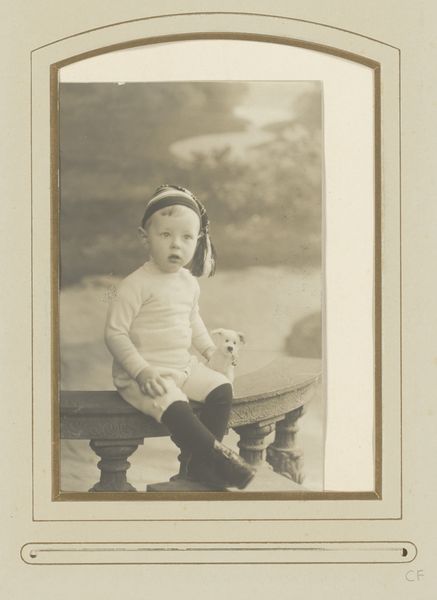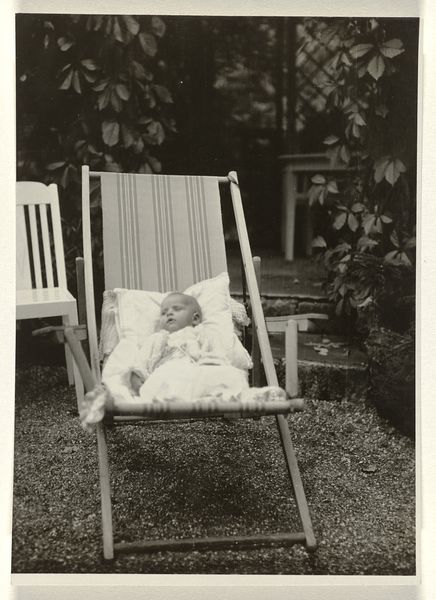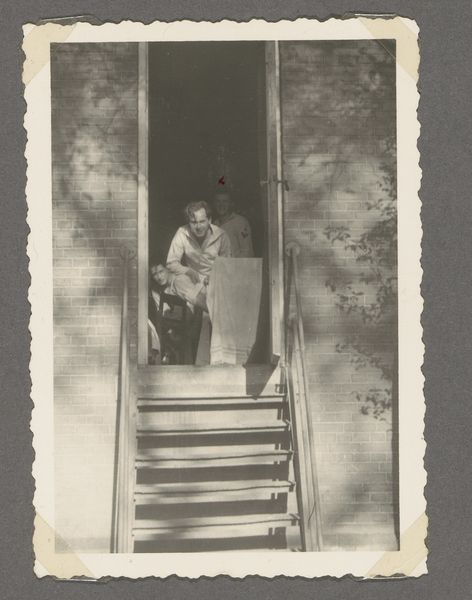
Eckart Titzenthaler, zoon van de fotograaf, op het dakterras van het woonhuis in de Friedrichstrasse, Berlijn Possibly 1916 - 1919
0:00
0:00
photography, gelatin-silver-print
#
portrait
#
landscape
#
archive photography
#
photography
#
historical photography
#
gelatin-silver-print
#
realism
Dimensions: height 77 mm, width 106 mm, height 84 mm, width 112 mm
Copyright: Rijks Museum: Open Domain
Curator: Here we see a gelatin-silver print from what is thought to be the period of 1916 to 1919. It is entitled "Eckart Titzenthaler, zoon van de fotograaf, op het dakterras van het woonhuis in de Friedrichstrasse, Berlijn" by Waldemar Titzenthaler, which translates to Eckart Titzenthaler, son of the photographer, on the roof terrace of the house in Friedrichstrasse, Berlin. Editor: The sepia tones immediately strike me. There's a tender vulnerability about the child in the frame, cradled by the bars of the crib, almost overwhelmed by the overgrowth of the garden. There's an intimacy, too, likely owed to it being a picture of his son. Curator: Absolutely. And during that specific moment in German history, the Great War's impact permeated every level of society. Could this domestic scene reflect an attempt to nurture hope amidst collective anxiety? A rooftop garden as a space of renewal, both for the child and perhaps the family as a whole? The crib reads simultaneously as refuge, and restriction. Editor: It's fascinating how sunflowers, symbols of adoration and longevity, loom almost menacingly behind him; drooping, maybe past their prime. They could represent fleeting childhood but also the resilience of life pushing upwards even during uncertain times. Curator: A potent contrast indeed. The symbols intertwine in intriguing ways; domesticity set against the backdrop of urban architecture. I would add that in the era of its making, gelatin silver printing democratized photography by enabling affordable production and the widespread circulation of images – marking a shift in visual culture itself. The role of family photography in documenting these shifting power dynamics cannot be understated. Editor: Looking again at Eckart's downcast eyes, a sense of apprehension overcomes the serenity that seemed prevalent at first glance. Is he just tired, or are his surroundings foreshadowing looming societal anxieties of the interwar period, captured, maybe inadvertently, in the arrangement of the flora, and in the lines of that stark little cot? Curator: These sorts of works reveal more with repeated exposure, prompting layered historical and cultural questions while still keeping one’s interest invested in the life pictured. Editor: A layered family snapshot that seems to echo concerns beyond the personal sphere. A reminder that individual experiences cannot be separated from their broader social and political landscapes.
Comments
No comments
Be the first to comment and join the conversation on the ultimate creative platform.
